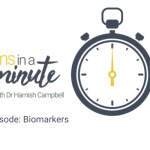- Secondary progressive MS is a form of MS that usually follows on from relapsing-remitting MS, but it is not easy to determine when this might happen to an individual, if at all.
- As such, there is an urgent need to identify risk factors that influence conversion of relapsing-remitting MS to secondary progressive MS.
- A large international study led by an Australian researcher studied cohorts with relapsing-remitting MS to identify demographic and clinical features that may be linked to a higher risk of developing secondary progressive MS.
- The study found several factors that influence the conversion to secondary progressive MS, paving the way for clinicians to identify those at risk of conversion earlier.
Why are risk factors for SPMS important?
There have been studies looking at factors linked with the development of SPMS, but most of these have been limited to certain geographical locations, have only examined factors in the first few years after MS onset, or consist of people who haven’t received treatment. If left untreated, up to 80% of people who have RRMS are at risk of developing SPMS, but we know that with treatment this number is much lower. However, once a person converts to SPMS current treatments are less effective. There is an urgent need to identify risk factors that can predict progression of RRMS to SPMS while taking into account the current landscape of treatments available for MS, and this is what researchers are trying to establish.
What is the latest in this area of research?
A large international study, led by Australian researcher Associate Professor Tomas Kalincik from the University of Melbourne, used data from an international clinical database called MSBase, to look at factors that influence the development of SPMS. This database captures information about treatments and outcomes from thousands of people with MS worldwide. Published in Multiple Sclerosis Journal, the study involved multiple analyses of the demographics, clinical data, as well as magnetic resonance imaging (MRI) data and cerebral spinal fluid (CSF – the fluid surrounding the brain and spinal cord) in people with RRMS.
The first analysis focused on demographic factors such as age and sex, and clinical data such as disease duration, number of relapses per year, number of relapses in the previous year, disease-modifying treatment (DMT) length and disability progression in over 15,000 people, and their link to conversion to SPMS. The second analyses involved clinical data as well as MRI brain data (6,145 people), MRI spinal cord data (1,745 people) or CSF (3,105 people), and their link to conversion to SPMS.
What do the results show?
Of the 15,717 people included in the first analysis, 85% received DMT and 10% converted to SPMS. The average time to convert was 32.4 years. Greater disability, rapid disability progression, higher number of relapses in the previous year, longer disease duration and older age were each linked to increased risk of SPMS. DMT and an improvement in disability based on the expanded disability status scale (EDSS), were linked to a reduced risk of SPMS. Adding the data from brain MRIs mostly confirmed these results. However, in this smaller second analysis group, DMT usage, the number of relapses in the previous year and MRI evidence of disease activity were not linked to SPMS risk. For those people where spinal cord MRI data was available, spinal cord lesions were not linked to SPMS risk. For those people with CSF data, a link was not found between the presence of oligoclonal bands (the bands of antibodies) in CSF and the development of MS.
What does this all mean?
These important findings show that the risk of conversion from RRMS to SPMS increases with older age, longer disease duration, greater disability, rapid disability progression and a higher number of relapses in the previous year, and decreases with better recovery from disability. They also show that DMTs may reduce the risk of conversion to SPMS, which is supported by other studies. The average time from MS onset to SPMS has increased from 15 years to 30 years over the last two decades, and this study has confirmed this, highlighting the efficiency of treatment options available to people with MS. These findings will be important for clinicians to help them identify people who are at high risk of developing SPMS at an earlier stage. This means that interventions can be started earlier, reducing people’s chances of ever developing SPMS.




